Abstract
1. In cats under pentobarbitone anaesthesia, a venous long-circuit technique was used to measure the blood flows in the superior vena cava and the hepatic, renal and iliac segments of the inferior vena cava. The sum of these flows gave the venous return (minus coronary and bronchial flows).
2. In these preparations, the mean venous return was 130 ml./kg. Of this 28% came from the superior vena cava and 37% from the hepatic, 23% from the renal and 12% from the iliac segments of the inferior vena cava.
3. After haemorrhage, the flows from all the venae cavae segments decreased. The quantitative changes varied with the particular cat, the degree and duration of the haemorrhage and whether the animal had been subjected to a previous haemorrhage.
4. The proportion of the reduced venous return draining from the superior vena cava and the hepatic segment increased, that draining from the renal and iliac segments decreased. Vasoconstriction occurred in all vascular beds, but was greatest in the kidney and hind limbs. Thus the blood flow through the head and liver was partially maintained at the expense of that through the kidneys and hind limbs.
5. Autoregulation of blood flow in the kidneys was usually seen immediately after the first removal of blood but with the onset of renal vasoconstriction it was reduced or abolished for the remainder of the experiment.
Full text
PDF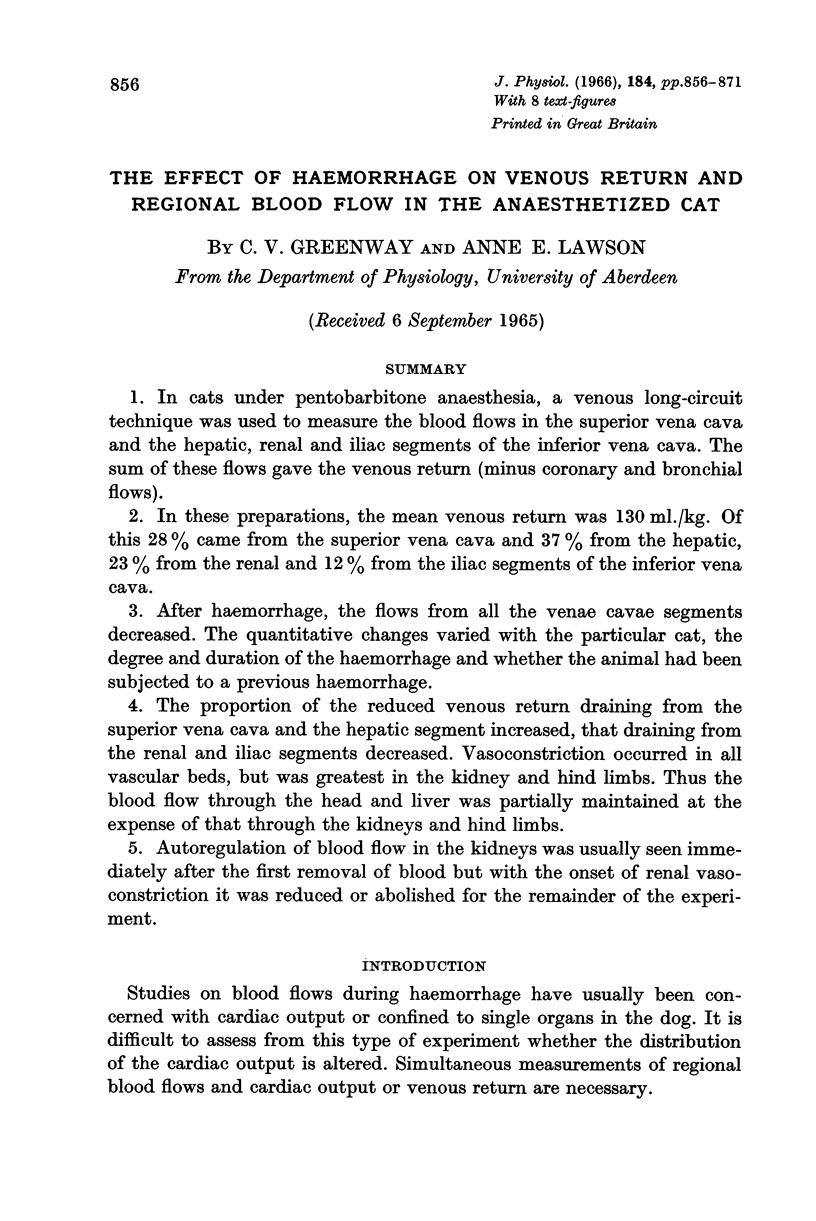
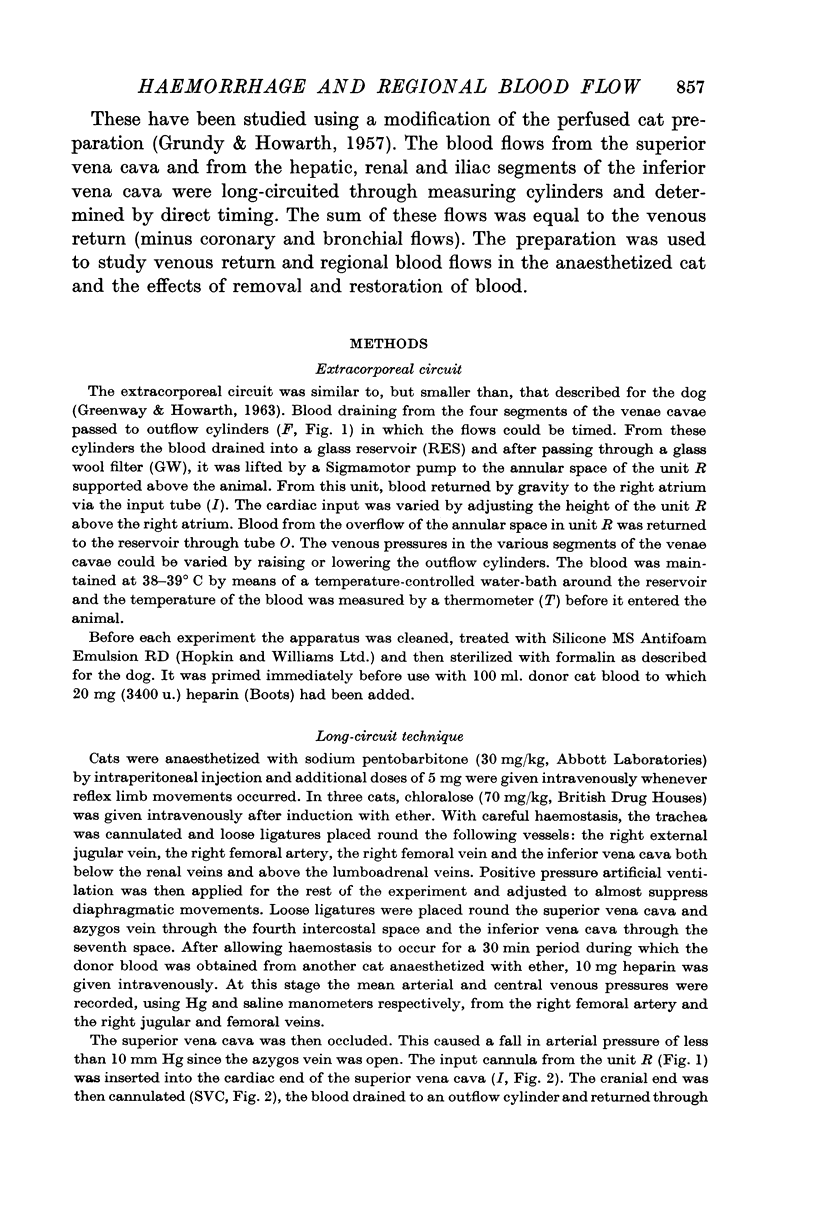
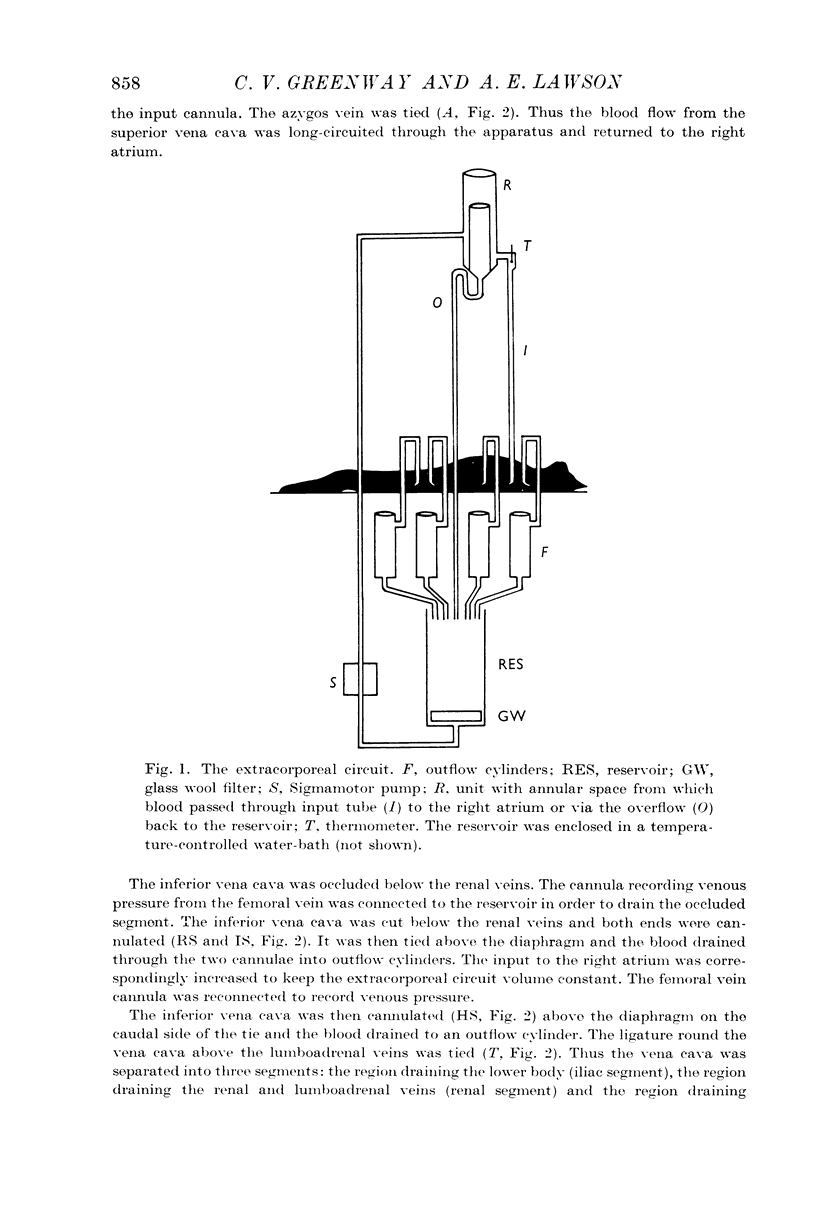
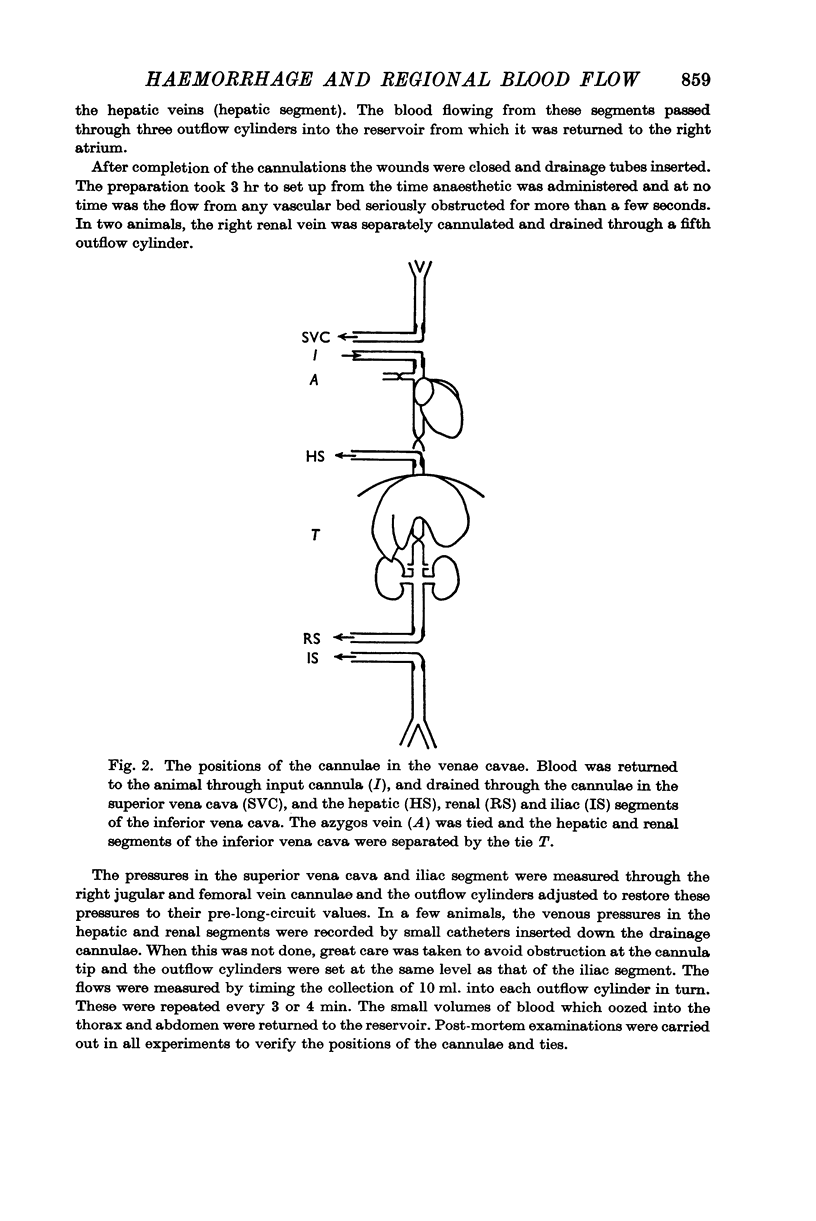
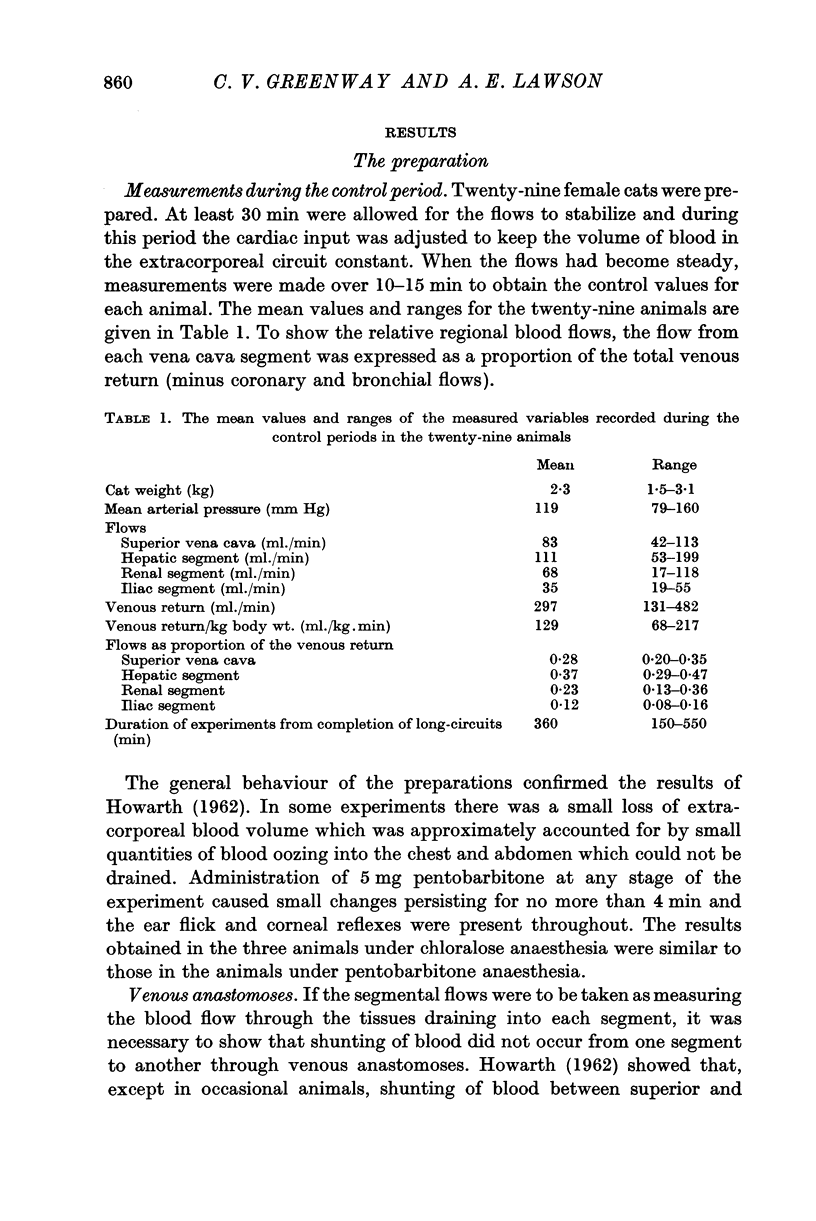
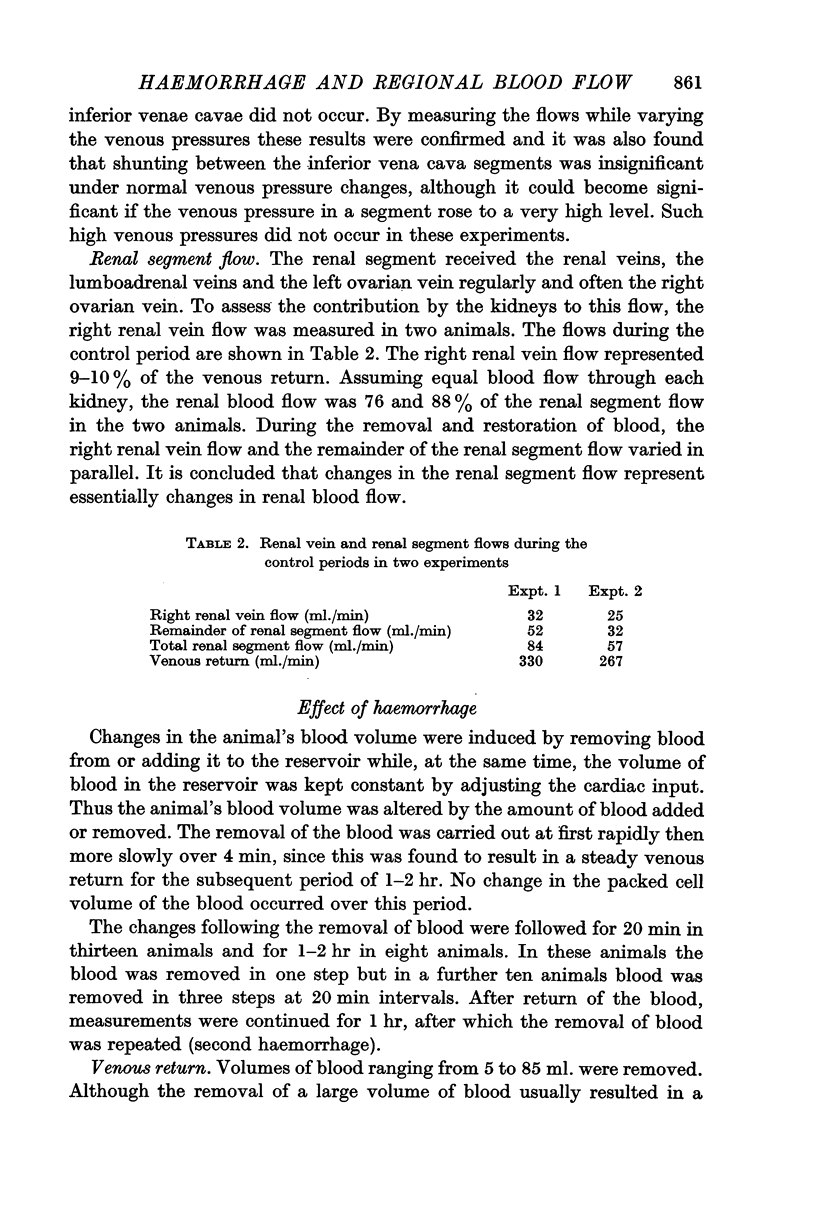
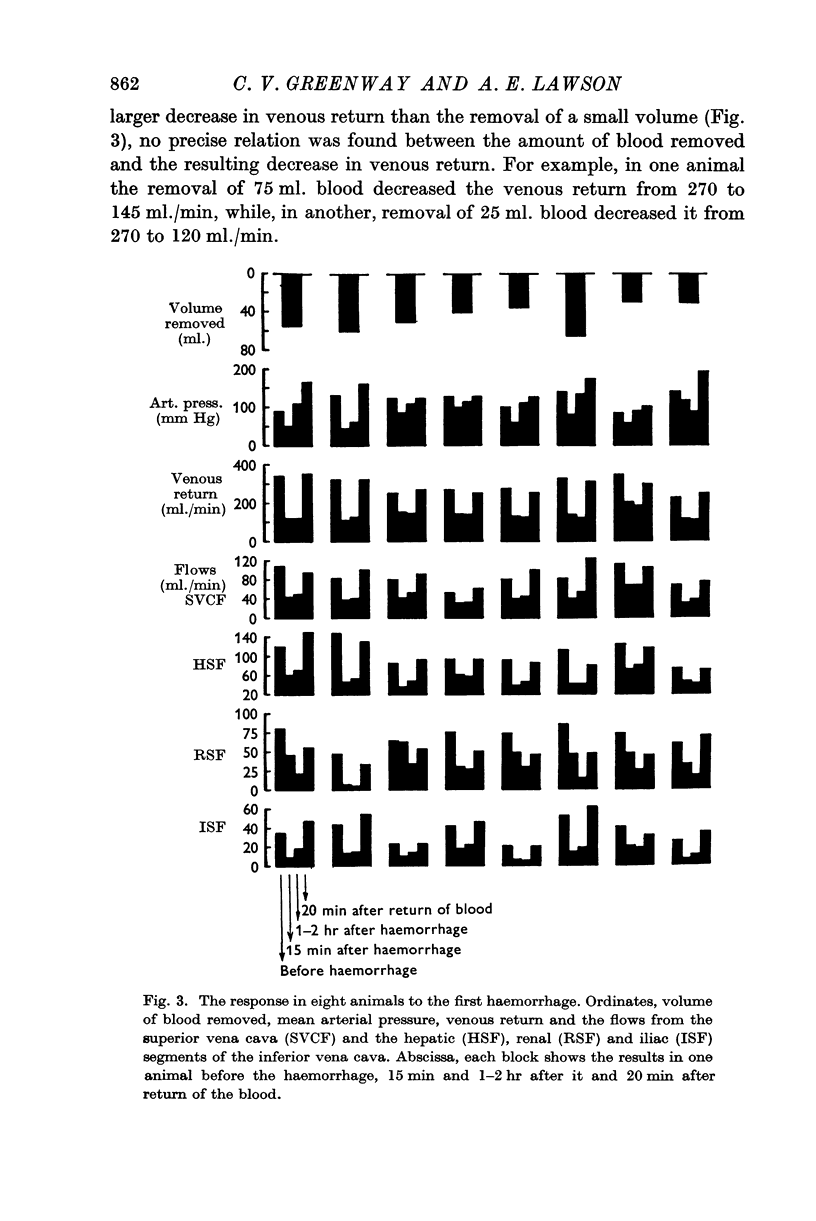
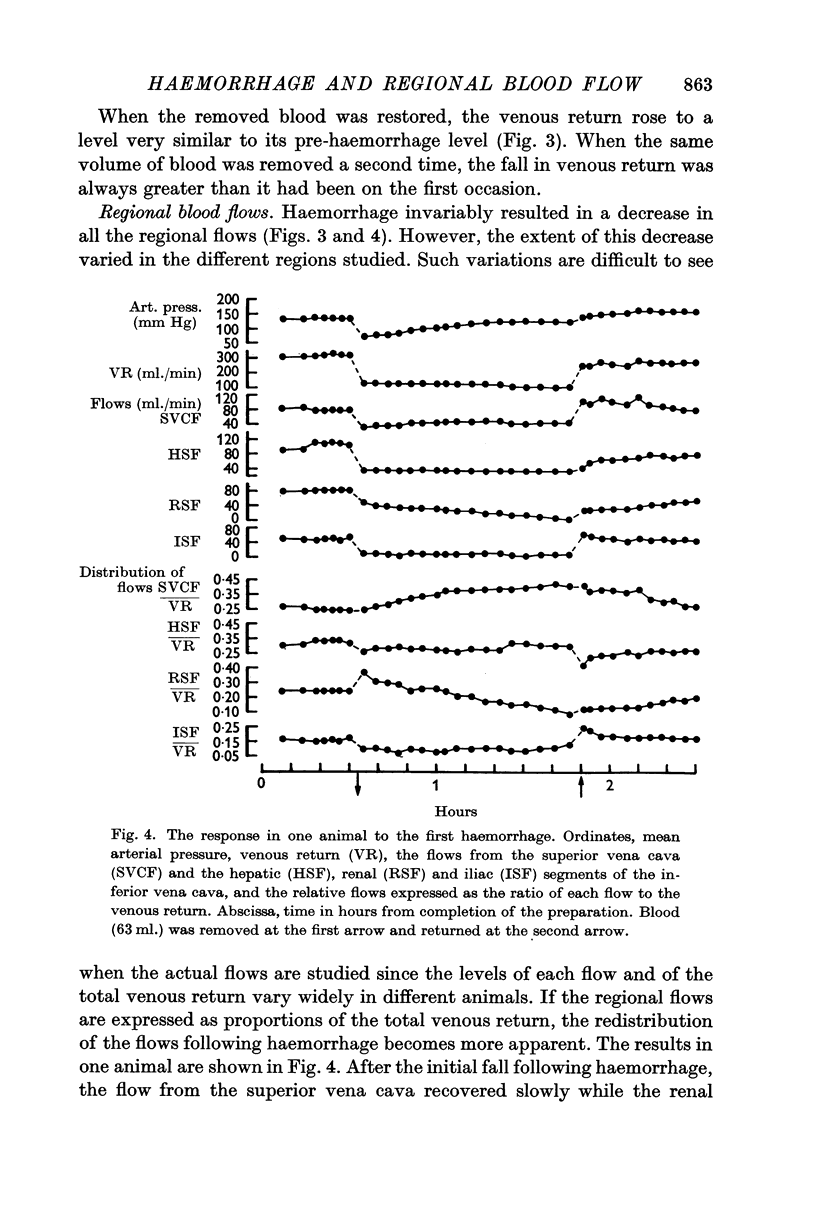

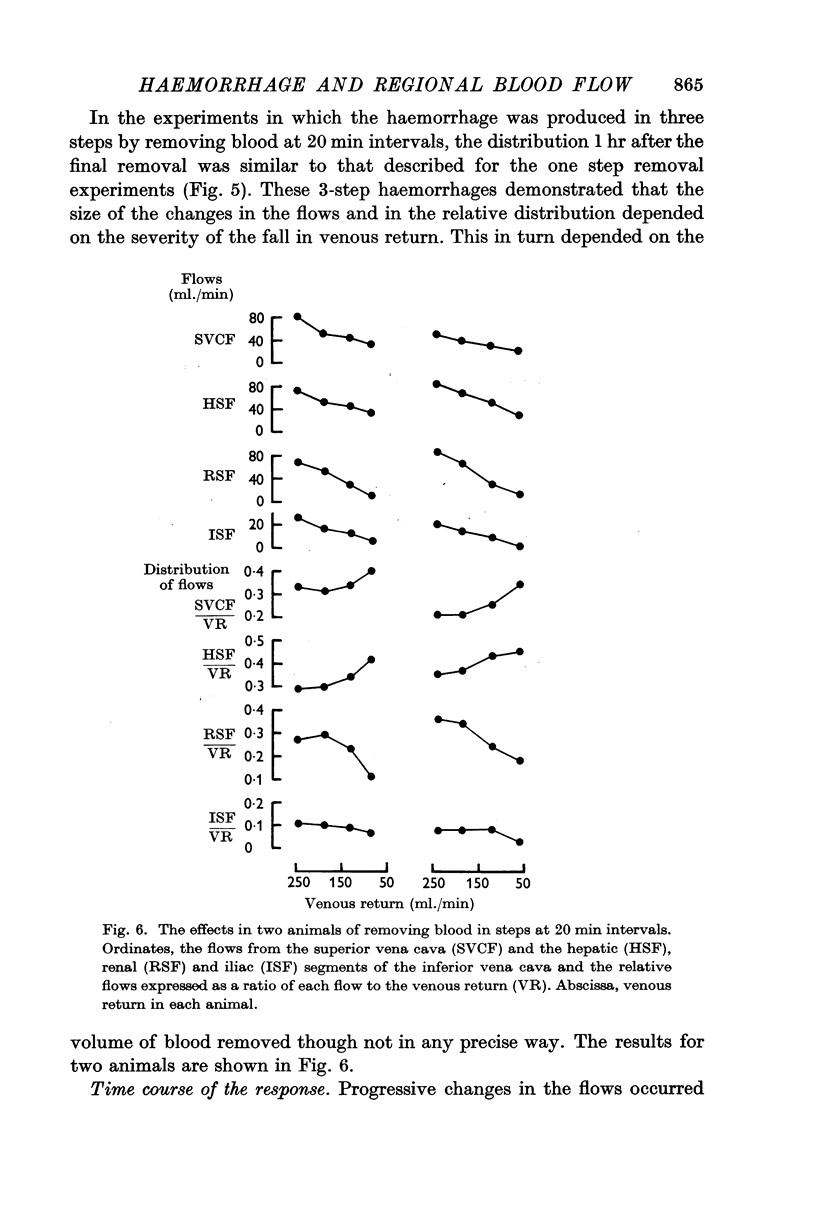
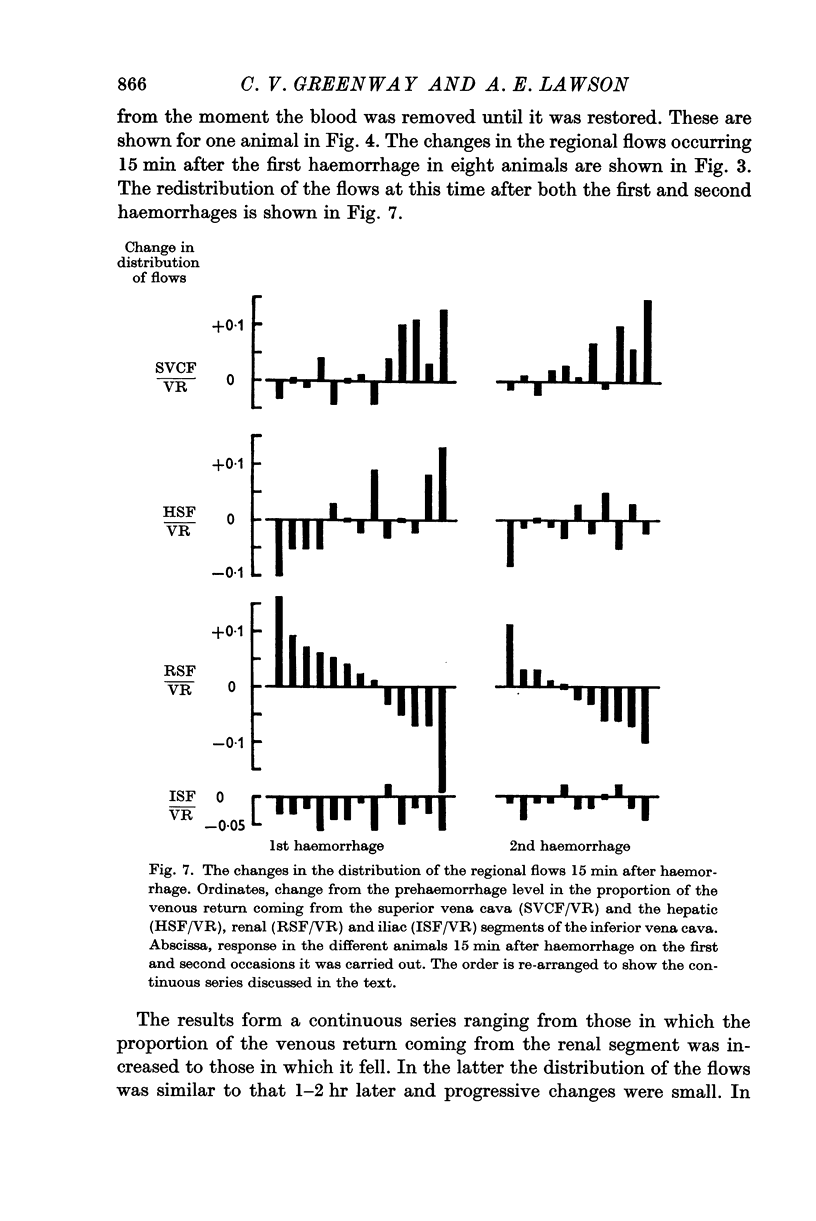
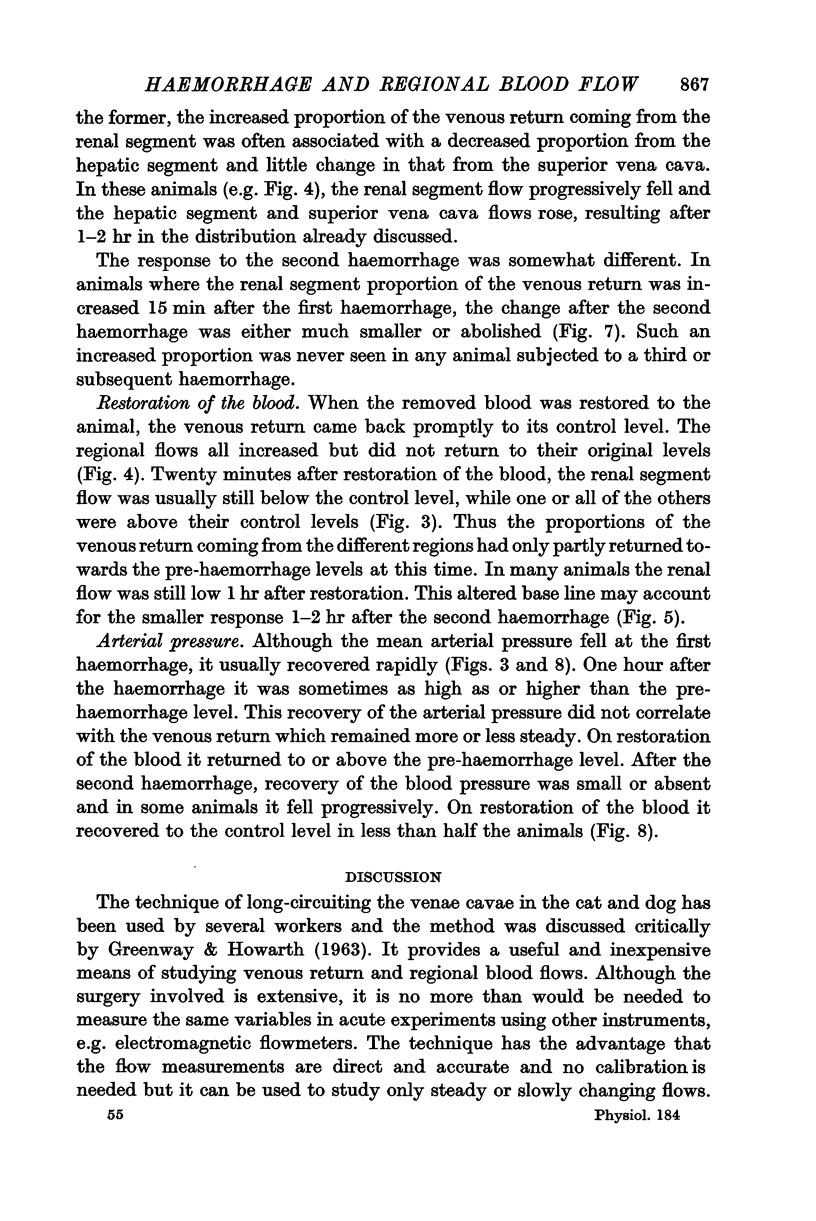
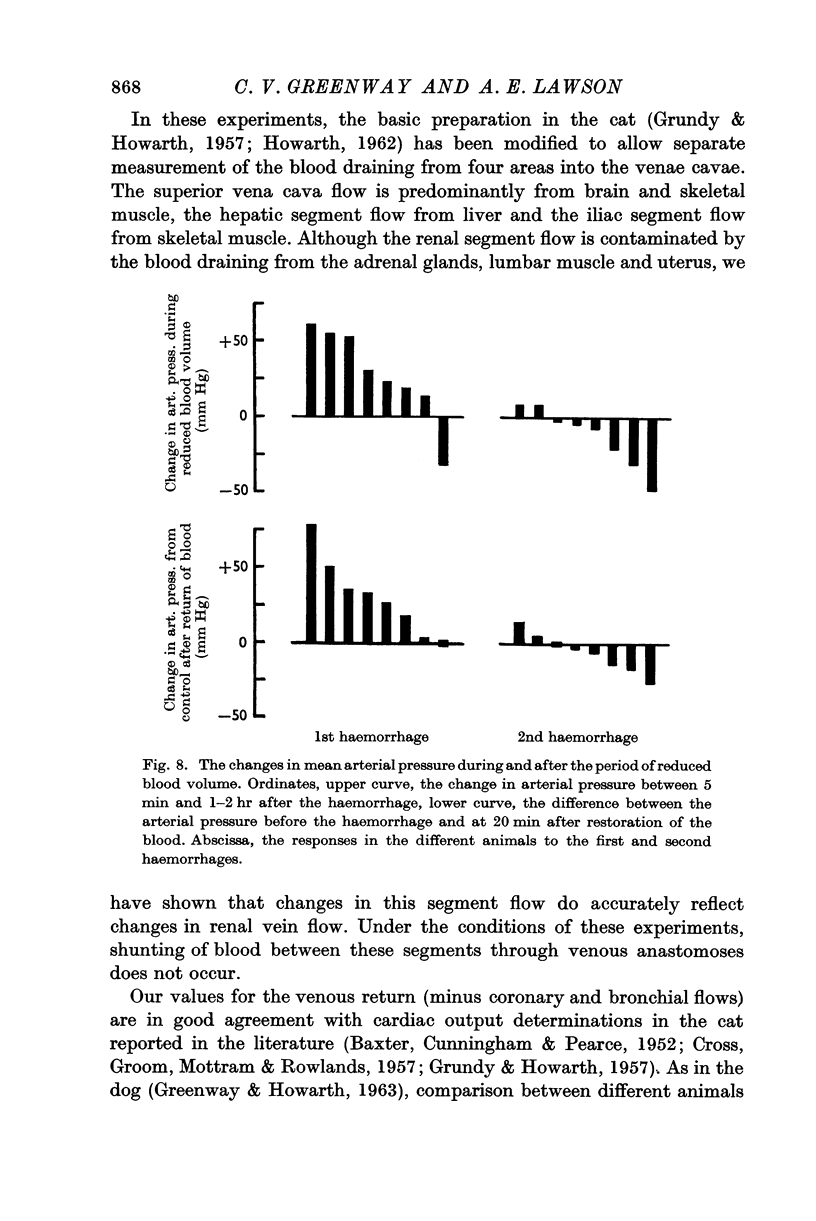
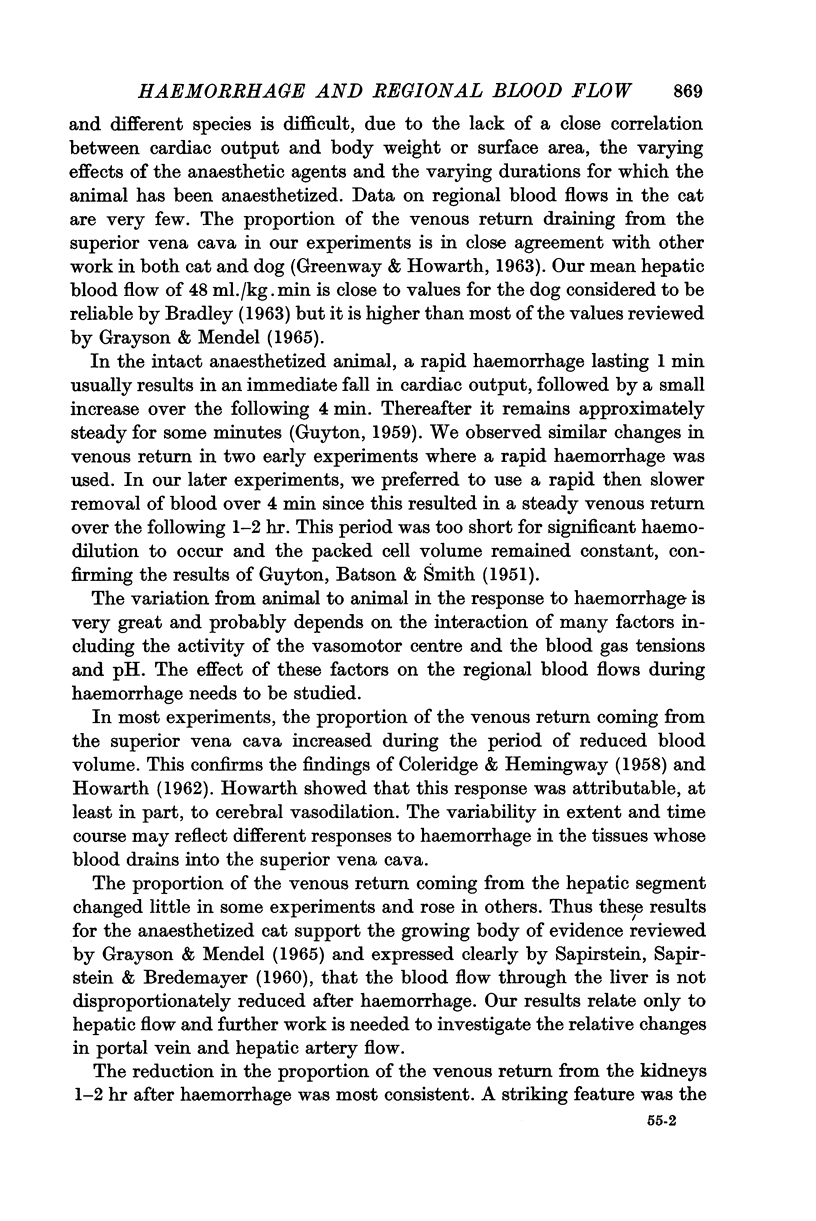
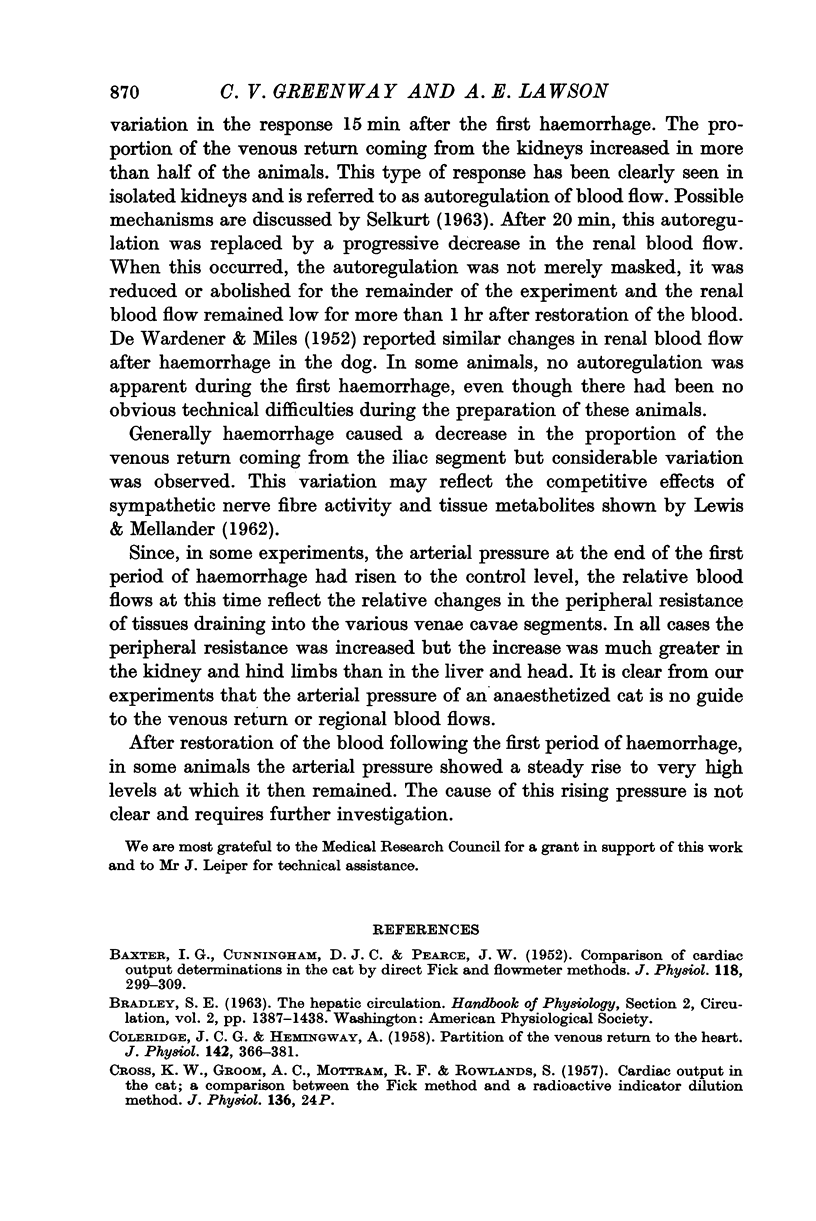
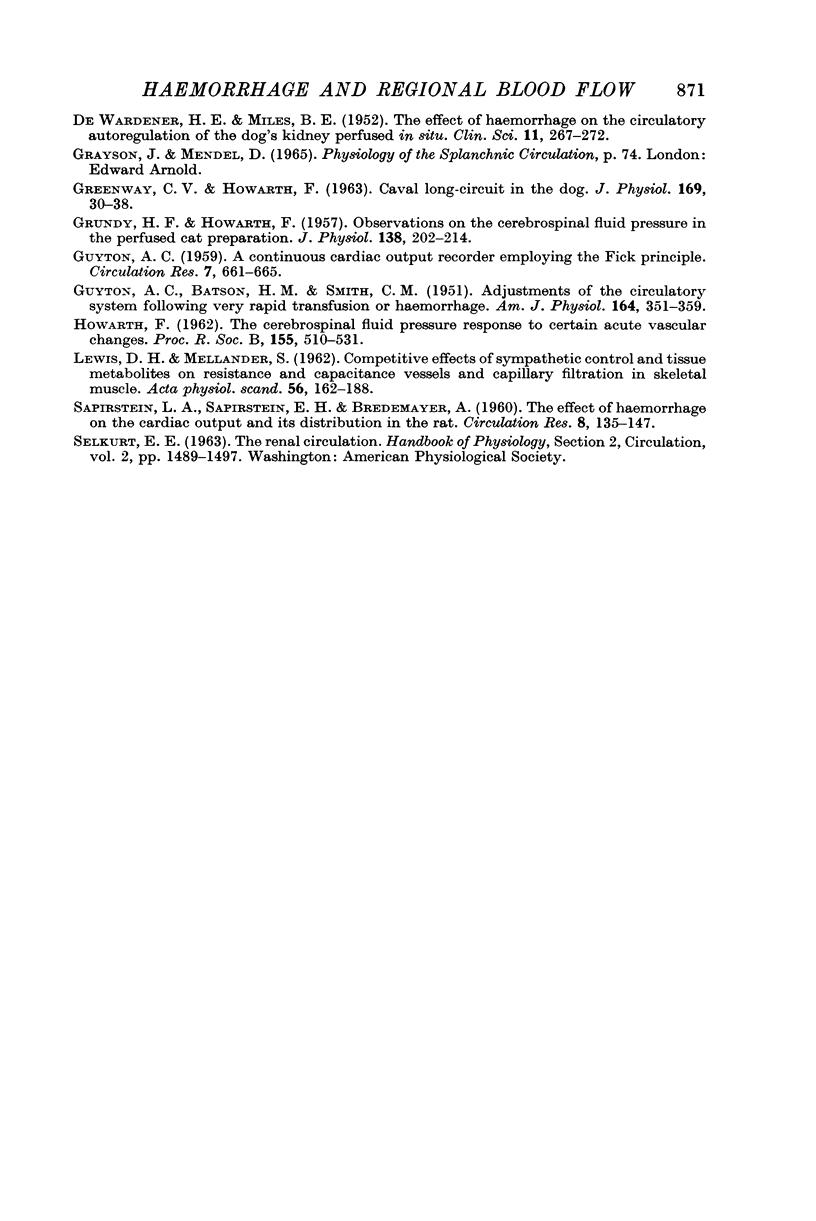
Selected References
These references are in PubMed. This may not be the complete list of references from this article.
- BAXTER I. G., CUNNINGHAM D. J. C., PEARCE J. W. Comparison of cardiac output determinations in the cat by direct Fick and flowmeter methods. J Physiol. 1952 Nov;118(3):299–309. doi: 10.1113/jphysiol.1952.sp004795. [DOI] [PMC free article] [PubMed] [Google Scholar]
- COLERIDGE J. C., HEMINGWAY A. Partition of the venous return of the heart. J Physiol. 1958 Jul 14;142(2):366–381. doi: 10.1113/jphysiol.1958.sp006023. [DOI] [PMC free article] [PubMed] [Google Scholar]
- CROSS K. W., GROOM A. C., MOTTRAM R. F., ROWLANDS S. Cardiac output in the cat; a comparison between the Fick method and a radioactive indicator dilution method. J Physiol. 1957 Apr 30;136(2):24P–25P. [PubMed] [Google Scholar]
- DE WARDENER H. E., MILES B. E. The effect of haemorrhage on the circulatory autoregulation of the dog's kidney perfused in situ. Clin Sci. 1952 Aug;11(3):267–272. [PubMed] [Google Scholar]
- GREENWAY C. V., HOWARTH F. CAVAL LONG-CIRCUIT IN THE DOG. J Physiol. 1963 Nov;169:30–38. doi: 10.1113/jphysiol.1963.sp007239. [DOI] [PMC free article] [PubMed] [Google Scholar]
- GRUNDY H. F., HOWARTH F. Observations on the cerebrospinal fluid pressure in the perfused cat preparation. J Physiol. 1957 Sep 30;138(2):202–214. doi: 10.1113/jphysiol.1957.sp005847. [DOI] [PMC free article] [PubMed] [Google Scholar]
- GUYTON A. C. A continuous cardiac output recorder employing the Fick principle. Circ Res. 1959 Jul;7(4):661–665. doi: 10.1161/01.res.7.4.661. [DOI] [PubMed] [Google Scholar]
- GUYTON A. C., BATSON H. M., SMITH C. M. Adjustments of the circulatory system following very rapid transfusion or hemorrhage. Am J Physiol. 1951 Feb;164(2):351–359. doi: 10.1152/ajplegacy.1951.164.2.351. [DOI] [PubMed] [Google Scholar]
- HOWARTH F. The cerebrospinal fluid pressure response to certain acute vascular changes. Proc R Soc Lond B Biol Sci. 1962 Apr 10;155:510–531. doi: 10.1098/rspb.1962.0016. [DOI] [PubMed] [Google Scholar]
- SAPIRSTEIN L. A., SAPIRSTEIN E. H., BREDEMEYER A. Effect of hemorrhage on the cardiac output and its distribution in the rat. Circ Res. 1960 Jan;8:135–148. doi: 10.1161/01.res.8.1.135. [DOI] [PubMed] [Google Scholar]


